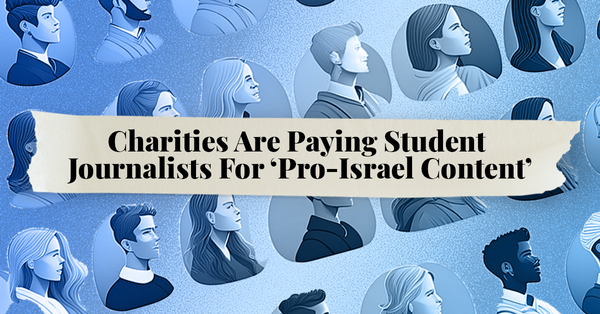Canadian journalism has a class issue: The mainstream media overwhelmingly supports the interests of the nation’s economic elite.
This is the case for many reasons, but a major one is the composition of the workforce itself, which is overwhelmingly middle to upper class. That is due in part to the economic barriers in the industry that make it more difficult for working class people to join and play a meaningful role. These issues begin at least as soon as the moment a potential journalist thinks about entering the field.
Imagine you’re a plucky, young aspiring journalist looking to get into the Canadian media industry. Traditionally, you’d have two options: enroll in an undergraduate or graduate level journalism program, or, if you’re a post-secondary student in another program, volunteer for your university paper.
There are journalists who took neither of these paths, but the industry is overwhelmingly, especially now, made up of people farmed from universities, one way or another. And both of these paths are set up to keep out working class students.
Journalism Programs
University tuition in Canada is incredibly expensive. Right now, the average cost for a year of study in Canada is more than $6,500. For many people who come from working class households, money like this is hard to come by, even with student loans. Add rent, food, travel and other living expenses, and those without extensive supports start to be pushed out of the equation.
Journalism school is no exception. For example, an undergraduate degree in journalism at Ryerson University will currently cost you more than $30,000. Other undergraduate journalism programs in Canada — like at Carleton and Concordia — cost even more.
Graduate journalism programs, meanwhile, are also expensive, and of course require the student to have already paid for an undergraduate degree of some sort. The program at Western University, for example, costs more than $15,000 for the one-year program when you include tuition and other school fees.
Couple these high tuition fees with the cost of living in the major cities many of the schools are located in — such as Toronto and Vancouver — and it becomes apparent how pursuing a journalism education is incredibly difficult for those without some wealth.
While journalism school may not be necessary to acquire the skills required to work in the industry, it offers many benefits apart from the formal education. For example, many journalism school professors or lecturers are currently working or retired journalists who have vast professional networks. Journalism schools make it clear to students that access to these networks is part of the deal you sign up for when you enroll. In fact, journalism school is increasingly marketed to potential students based on this promised access.
So, students who can afford to go to journalism school are getting access to professional networks that will help give them a major advantage over others who couldn’t afford the privilege.
Moreover, journalism schools often facilitate months of unpaid work through internship programs.
Unpaid internships are effectively illegal in Canada. However, students are allowed to be forced to do unpaid work if it is completed as an academic requirement. Journalism programs and media outlets are quick to exploit this loophole, with publications benefiting from free labour, and schools from their ability to offer students access to opportunities that others can’t get.
For example, most journalism schools require students to do potentially unpaid work, often at wealthy, major publications, in order to graduate. They will often have deals set up with these outlets, ensuring that a certain number of their students can temporarily work there.
With many unpaid internships lasting weeks, or sometimes months, one might ask themselves, “How does a student support themselves with such high tuition, while also doing unpaid work?” The answer is, they can’t — at least without thousands of dollars of financial support.
Unfortunately, it’s this sort of unpaid work that can lead to a packed resume, giving those who can afford it a leg-up in the job market after graduation. This means journalism schools offer benefits to wealthy students, while also disincentivizing major publications from implementing paid programs for young journalists that could benefit non-students.
So, in order to succeed in Canadian journalism schools, you must have the ability to pay ludicrously high tuition to be admitted, and then potentially work for long periods without getting paid. This is impossible for many prospective journalists in Canada.
Student Newspapers
Similar issues pervade the other major common entry point into the media industry: student-run newspapers.
Many Canadian journalists working today cut their teeth at university papers, whether as journalism students or in another program. A student publication provides both hands-on experience and education in journalism, often for anyone who wanders in.
However, while being part of a student newspaper is often squarely an extracurricular activity, it requires lots of unpaid work. Across Canada, there are student-publication editors who work effectively full-time positions entirely for free, small stipends or set hours of minimum wage at best. The newsrooms are full of those who work for nothing, or close to it.
As we know, pursuing an undergrad degree is expensive, so those who need to work full- or part-time to keep themselves afloat are often left out of the student newsroom, at least in any major role. A poor student who needs to work full-time to keep themselves afloat during their studies isn’t going to be able to spend their nights covering student politics for free.
This became clear to me during my time at the University of British Columbia’s student paper, The Ubyssey. Writers who were able to be there for breaking stories, spend long hours hashing out narrative details with editors and ‘prove themselves’ by putting in the time, often saw advancement in the paper, across sections. In my case, I was only able to volunteer, and later become an editor, because of extensive student loans and needs-based bursaries, as even the salary editors got was not enough to support myself.
The volunteer newsroom is effectively set up to provide space for those who have free time, a luxury often afforded to the rich. This once again serves to help ensure wealthier students are the ones who get to make it into journalism.
As Canadian journalism supposedly strives to become more inclusive and diverse, it also needs to grapple with the fundamental wealth bias ingrained in it. Otherwise, the high costs, both in time and money, of breaking into the industry will continue to shape what it looks like and how it works, to the detriment of Canadians the media is supposed to serve.








Member discussion